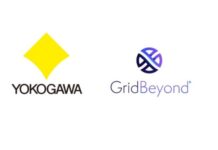LONDON, Aug. 3, 2019 – European Industrial Valves and Actuators Market, Forecast to 2024, reveals that the primary factors driving the $5.8 billion market towards $7.05 billion by 2024 include an increased focus on automation across industries to improve operational efficiencies and initiatives like Industry 4.0 and Industrial Internet of Things (IIoT). Manufacturers offering high reliability with effective quality management systems are best positioned to harness growth prospects.
“Initiatives such as Industry 4.0 and IIoT are expected to drive the growth of smart solutions among top participants in the European valves and actuators market,” said Vinitha Viswanathan, Senior Research Analyst, Industrials at Frost & Sullivan. “However, tier I and II participants are still sceptical about investing in smart technologies due to unskilled workforce and large initial investments.”
Frost & Sullivan’s latest report, Analysis of the European Industrial Valves and Actuators Market, Forecast to 2024, deep-dives into the factors and trends influencing growth in the industrial valves and actuators sector in Europe. Major market drivers and restraints, segment-wise revenue forecast, detailed market share and competition analysis, and growth prospects are all discussed.
Stringent regulations laid by regulatory bodies like the European Environment Agency (EEA) play an important role in increasing demand for valves and actuators. For example, the oil and gas industry has strict regulations to reduce pollution due to emission of toxic gases in its processes. In addition, increased investments in the water and wastewater, food and beverage, chemicals, pulp and paper, and pharmaceutical sectors are expected to fuel market revenues and growth.
“The water and wastewater treatment industry is a major consumer of industrial valves and actuators, and the monitoring and controlling of water treatment and transportation activities have dramatically increased,” noted Viswanathan. “Furthermore, rising automation will enhance productivity and boost process efficiencies.”
For further success, participants should tap into the growth opportunities inherent in:
- Developing eco-friendly and energy-efficient solutions to meet increasingly strict regulations.
- Adopting smart technologies such as “digital twin,” which reduces costs by testing various operating parameters and optimising their output prior to deployment.
- Embracing new business models such as pay-per-use or Product-as-a-Service to help keep client-side costs in check.
- Investing in the improvement of product quality while keeping overall costs low.
For more information, visit : https://go.frost.com/















